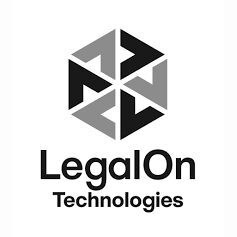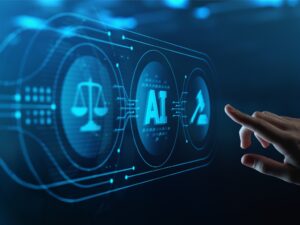Beyond CLM: Right-Sizing Technology to Address the Biggest Pain in Legal
By Daniel Lewis | Presented by LegalOn Technologies
April 21, 2025

Daniel Lewis is the US CEO of LegalOn Technologies, a global leader in AI contract review, and a leader in advancing legal technology. Previously, as co-founder and CEO of Ravel Law, Lewis helped pioneer the use of data analytics and visualization to transform legal research.
Published in Today's General Counsel, May 2025

Sponsored Content
Presented by LegalOn Technologies
For years, Contract Lifecycle Management (CLM) has promised to streamline legal operations, offering greater visibility and process improvements. Yet, despite its broad capabilities, CLM has failed to deliver in the area that takes the most time and causes the most headaches — contract review.
Now, a new era of legal AI is emerging, shifting the focus from managing workflows to tackling the real bottlenecks. AI contract review software addresses the most time-consuming part of contracting, helping legal teams review agreements faster, more accurately, and with fewer roadblocks.
Why CLM Has Fallen Short
CLM emerged in the early 2000s to help legal teams collaborate across the five traditional stages of contracting — intake, review, negotiation, signature, and storage and management. Early CLM systems were basic repositories with search, reporting, and routing functionality. Over time, CLM expanded to include workflow automation, electronic signatures, compliance tracking, collaboration, and analytics.
Despite these advancements, many legal teams find that CLM fails to address the most painful aspects of their work. Why? Because CLM technology is far too broad. The claim to solve every challenge in each phase of contracting isn’t realistic. A single system can’t do it all — at least not well.
More than three in four (77%) of CLM implementations fail for two main reasons:
- Implementation is complex and lengthy: Many CLMs require months of setup and a team of external consultants and project managers to get started, and
- Adoption is low: Customers purchase CLM for a specific use case but often only use a fraction of features, leading to wasted spend.
Legal leaders must take time to understand and pinpoint their biggest challenges and who they impact most. For some legal teams, contract storage or tracking may be less challenging than slow and manual review, inconsistent contract language, and inefficient negotiations. Tools that attempt to cover the full contract lifecycle may lack the specialized capabilities needed to address contract review bottlenecks in legal workflows.
This gap is why legal teams are turning to AI-powered contract review in record numbers. According to LegalOn’s State of Contracting Survey, AI adoption for contract review has increased by 75% over the past year, showing a clear shift toward more targeted solutions that directly address contract review.
AI-Powered Contract Review: The Missing Piece
Instead of trying to overhaul or replace existing systems, legal teams now have the option to right-size their technology stack by adding AI tools alongside their existing tools to address the most pressing pain points. On average, in-house attorneys spend more than half of every business day (4.5 hours) reviewing and managing contracts, and almost two in three legal teams report delays in reviewing and approving contract terms that are straining their relationships with sales and procurement teams. It’s no wonder that 77% of legal teams are looking to leverage technology more effectively for contract review.
However, lawyers who turn to consumer tools like ChatGPT to perform various legal tasks must use caution, as hallucination rates range from 69% to 88% in response to specific legal queries. As a result, the legal tech market is rich with startups touting AI tools that are purpose-built to reduce hallucinations. Yet, Stanford University’s Institute for Human-Centered Artificial Intelligence found that even these tools are found to hallucinate 17% of the time, spurring valid concerns around hallucinations and security.
What Legal AI Needs to Get Right
That’s not to say that contract review isn’t amenable to AI. It’s the opposite. The best AI for this task must be anchored in attorney-written content and guided by legal expertise at every stage to ensure accuracy, consistency, and trustworthiness. Contract review technology should be trained and rigorously tested by lawyers with complete, practical playbooks built by experienced attorneys, not ChatGPT. Only then can a legal AI tool ensure quality results that businesses can rely on.
So, what is required for AI contract review to deliver on these promises?
- Defined issue-spotting and playbooks: Pre-built review standards ensure that AI operates consistently within defined parameters to spot issues with thorough, customizable playbooks that work without a lengthy implementation.
- Guided by legal expertise: Legal AI, built on attorney-written content and tested by lawyers, delivers trustworthy outputs with clear explanations for legal professionals to verify reasoning.
- Secure and Private: Technology that is SOC 2 Type II compliant with legal-grade protections ensures agreements are secure and private.
A Smarter Path Forward
We’re at a turning point in legal tech. Instead of one-size-fits-all CLM solutions, legal teams can now focus on specific needs and integrate purpose-built tools that solve the most painful parts of their work.
Beyond CLM, a new legal tech landscape is emerging — one where AI-driven tools like LegalOn Technologies deliver the efficiency, accuracy, and speed that legal teams have been promised.
Must read intelligence for general counsel
Subscribe to the Daily Updates newsletter to be at the forefront of best practices and the latest legal news.
Daily Updates
Sign up for our free daily newsletter for the latest news and business legal developments.




